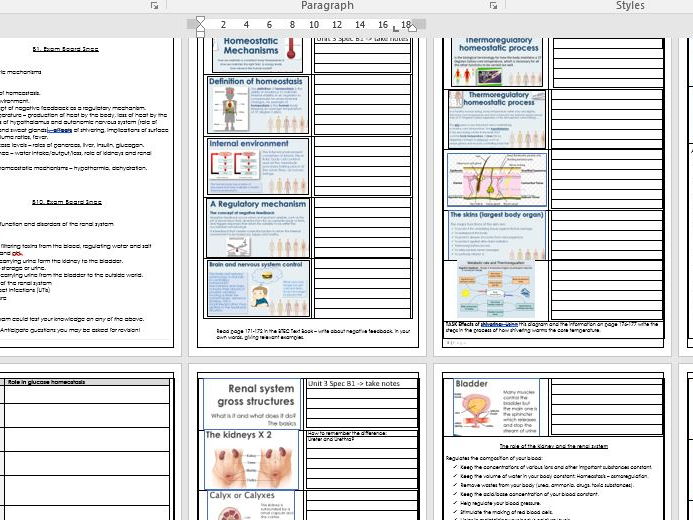



































This is a complete resource package, which consists of a 16 page, interactive student booklet for the BTEC Health & Social Care Level 3 Unit 3 Anatomy and Physiology;
B1 Homeostasis Mechanisms and
B10 The Renal system and dysfunctions. You can add and alter it to suit your style of teaching. There is a plan of delivery from Sept 2024, a programme of work and an end of topic exam paper and mark scheme to test progress to complete the package.
Along with this, is the TEN engaging PowerPoints and additional work sheet tasks and activities that go with it, such as a card match activity.
PowerPoints are well designed and have embedded videos in them, with booklet pages for students to make notes and example of possible exam questions that may be asked, to get them thinking and applying new knowledge.
The complete B1 and B10 part of the spec has been covered, in detail, see below:-
B1 Homeostatic mechanisms
• Definition of homeostasis.
• Internal environment.
• The concept of negative feedback as a regulatory mechanism.
• Body temperature – production of heat by the body, loss of heat by the body, roles of hypothalamus and autonomic nervous system (role of arterioles and sweat glands), effects of shivering, implications of surface area to volume ratios, fever.
• Blood glucose levels – roles of pancreas, liver, insulin, glucagon.
• Fluid balance – water intake/output/loss, role of kidneys and renal system.
• Failure of homeostatic mechanisms – hypothermia, dehydration.
B10 Structure, function and disorders of the renal system
• Kidneys – filtering toxins from the blood, regulating water and salt balance and pH.
• Ureters – carrying urine form the kidney to the bladder.
• Bladder – storage or urine.
• Urethra – carrying urine from the bladder to the outside world.
• Disorders of the renal system
• urinary tract infections (UTIs)
• renal failure
There’s a Facebook group with 5,200 health and social care sharing ideas and resources, come and join the big subject team :-)
#hscresources
Please leave me a review, what do you think?
Good luck in your teaching :-)
#hscresources
Something went wrong, please try again later.
Thank you, excellent resources
Amazing !
Amazing resources!!
Thank you so much for this awesome resource from someone returning from healthcare after 18months away from teaching.
Excellent resource
Report this resourceto let us know if it violates our terms and conditions.
Our customer service team will review your report and will be in touch.